Setting up GPM on the High Capacity Centrifuge
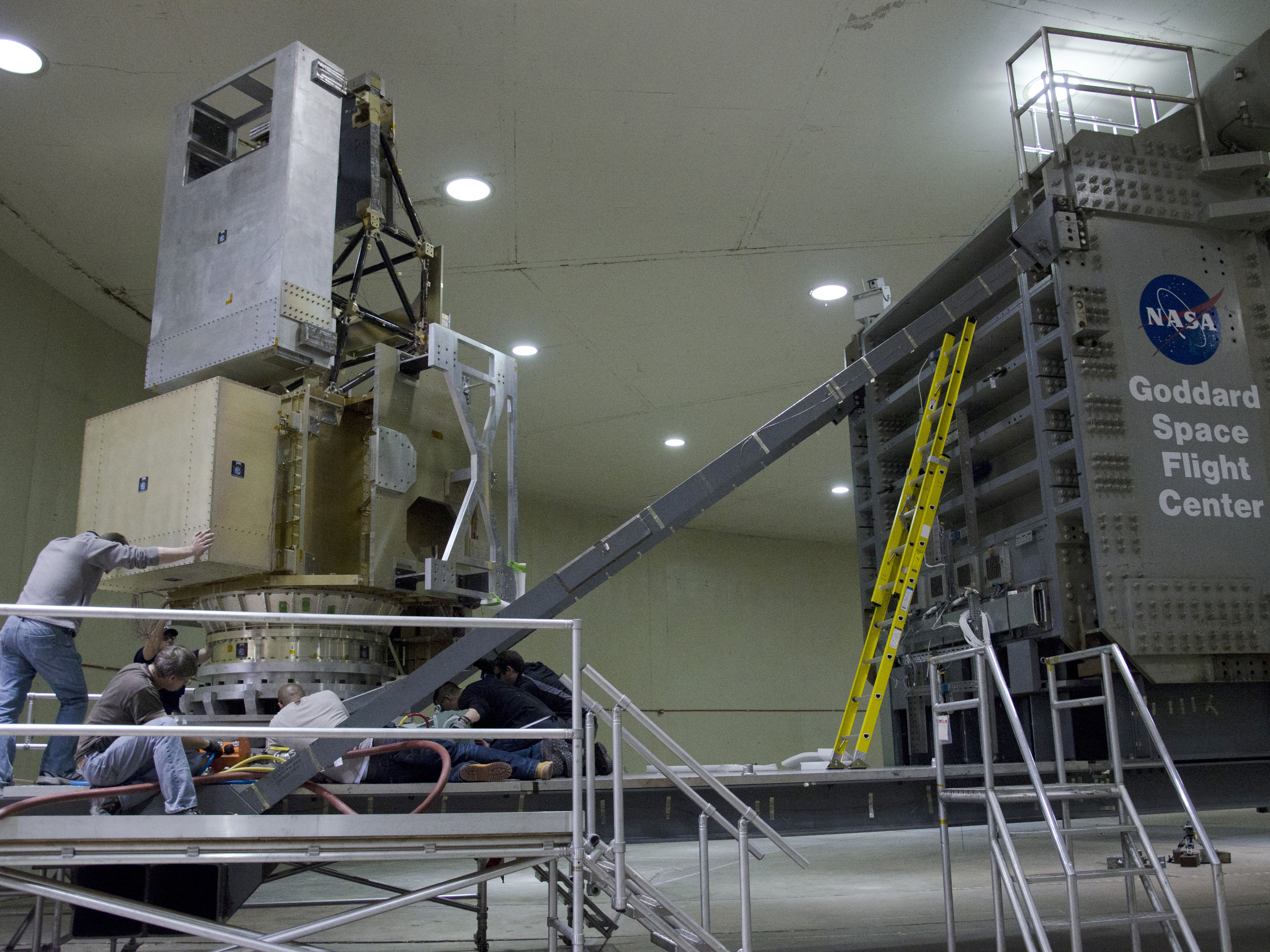
Multimedia content

(ambient audio only)
GPM moves from the clean room to the test chamber on a dolly without wheels. Compressed air is pumped out under airpads that float the Spacecraft on a bed of air. The wind generated when the centrifuge moves at its maximum speed are more than 200 mph - that's tornado speed. But since they move with the centrifuge the satellites tested only feel 20 mph winds. Leaning outward at 45 degrees for one test orientation, GPM comes within 28 inches of the wall. When lifted onto the platform it cleared the ceiling by only five inches.
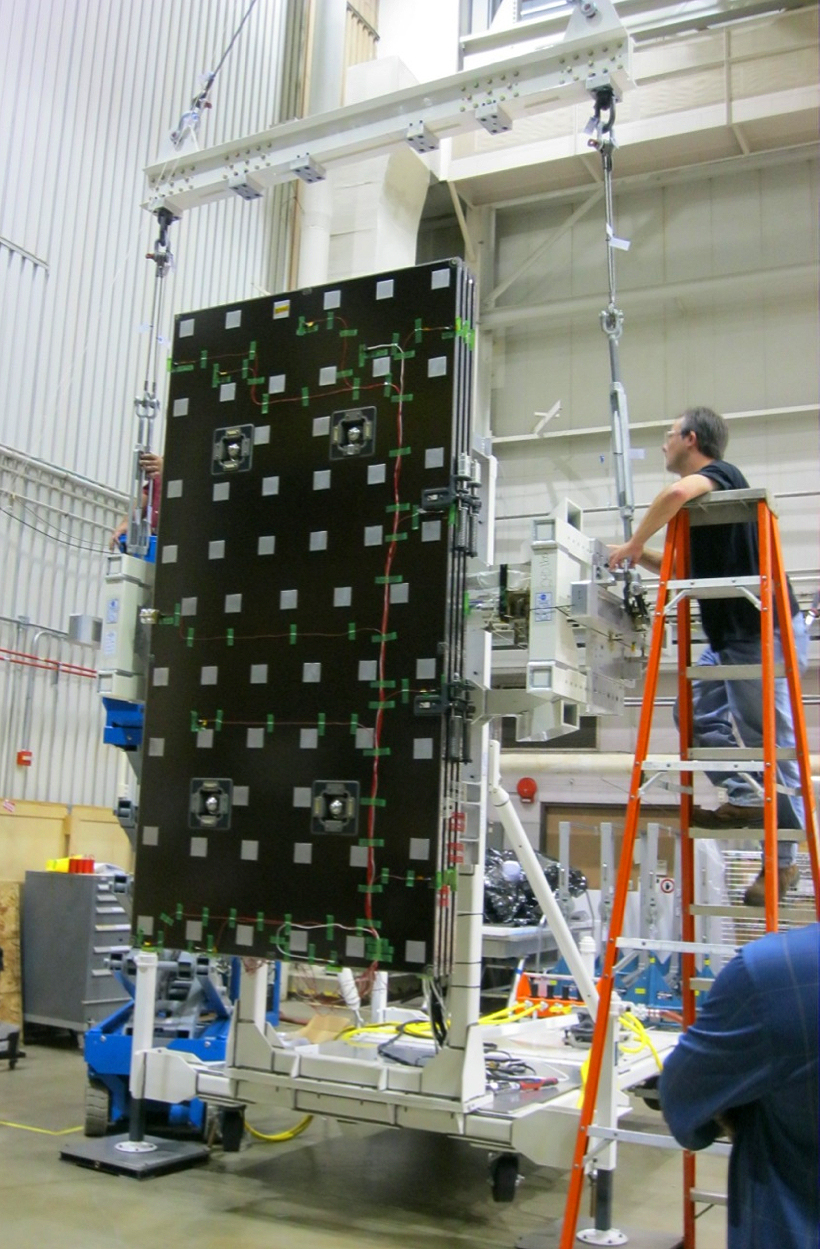
The small squares are 59 accelerometers that measure the movement of the array.
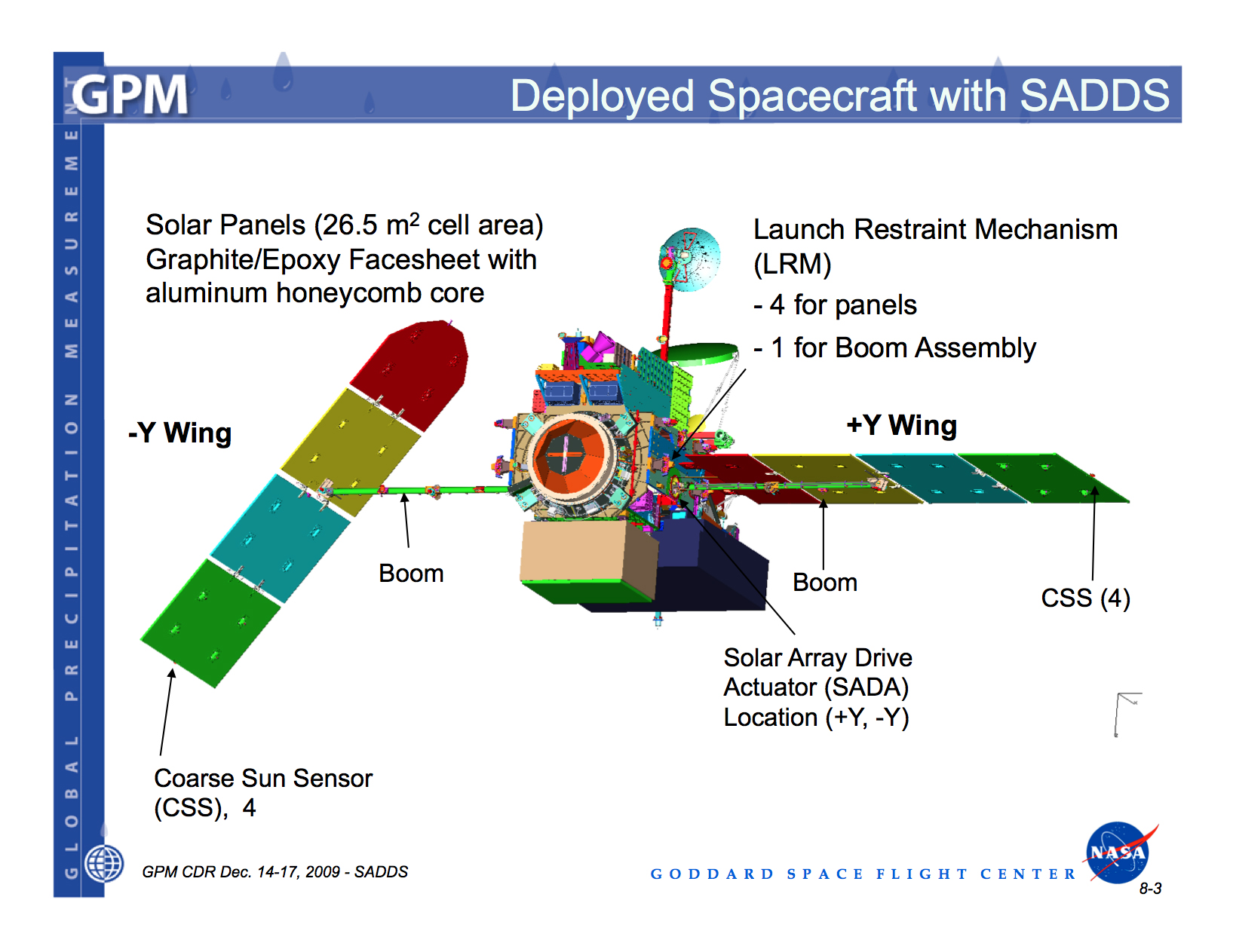
The solar arrays provide all the electrical energy for the satellite, and must survive flying in Earth's thin upper atmosphere at an altitude of 407 km (253 miles), where they will be subjected to small drag forces and exposure to corrosive atomic oxygen.

Each time a new component is added to the spacecraft, rigorous testing is conducted to ensure the new components operate correctly and work effectively with existing systems.


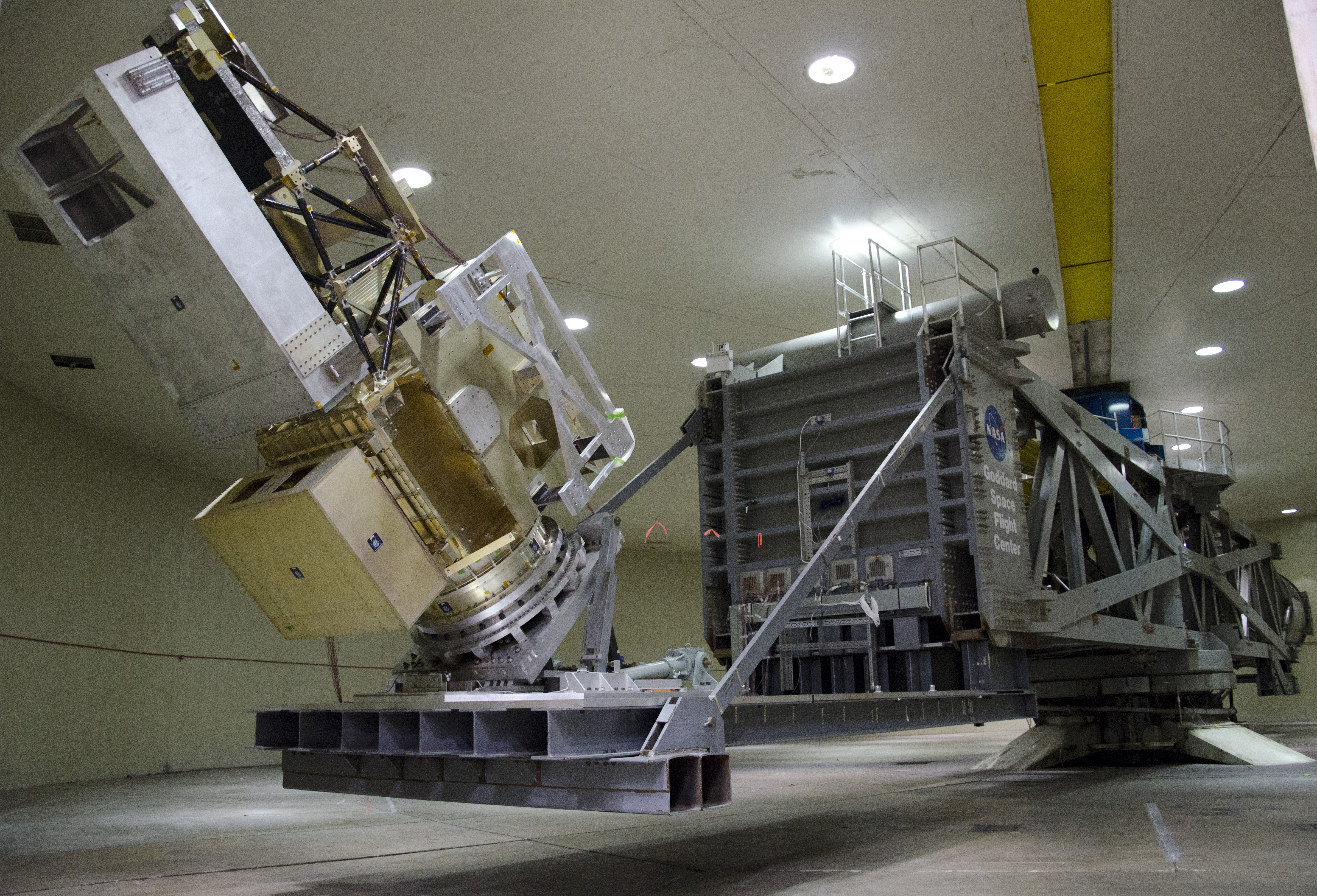
NASA technicians spun the Global Precipitation Measurement (GPM) satellite up to just over 10 RPM in Goddard Space Flight Center’s High-Capacity Centrifuge facility March 31. At that speed, the spin exerted a lateral pressure of 2.4 G’s, or 2.4 times the force of gravity on the satellite.
Spin tests such as these are used to determine whether the forces of launch could adversely affect hardware we put into space, and to test spacecraft chassis design.

Various ground validation instruments, including the Parsivel Disdrometer in Finland, a Micro Rain Radar, and a Pluvio Snow guage
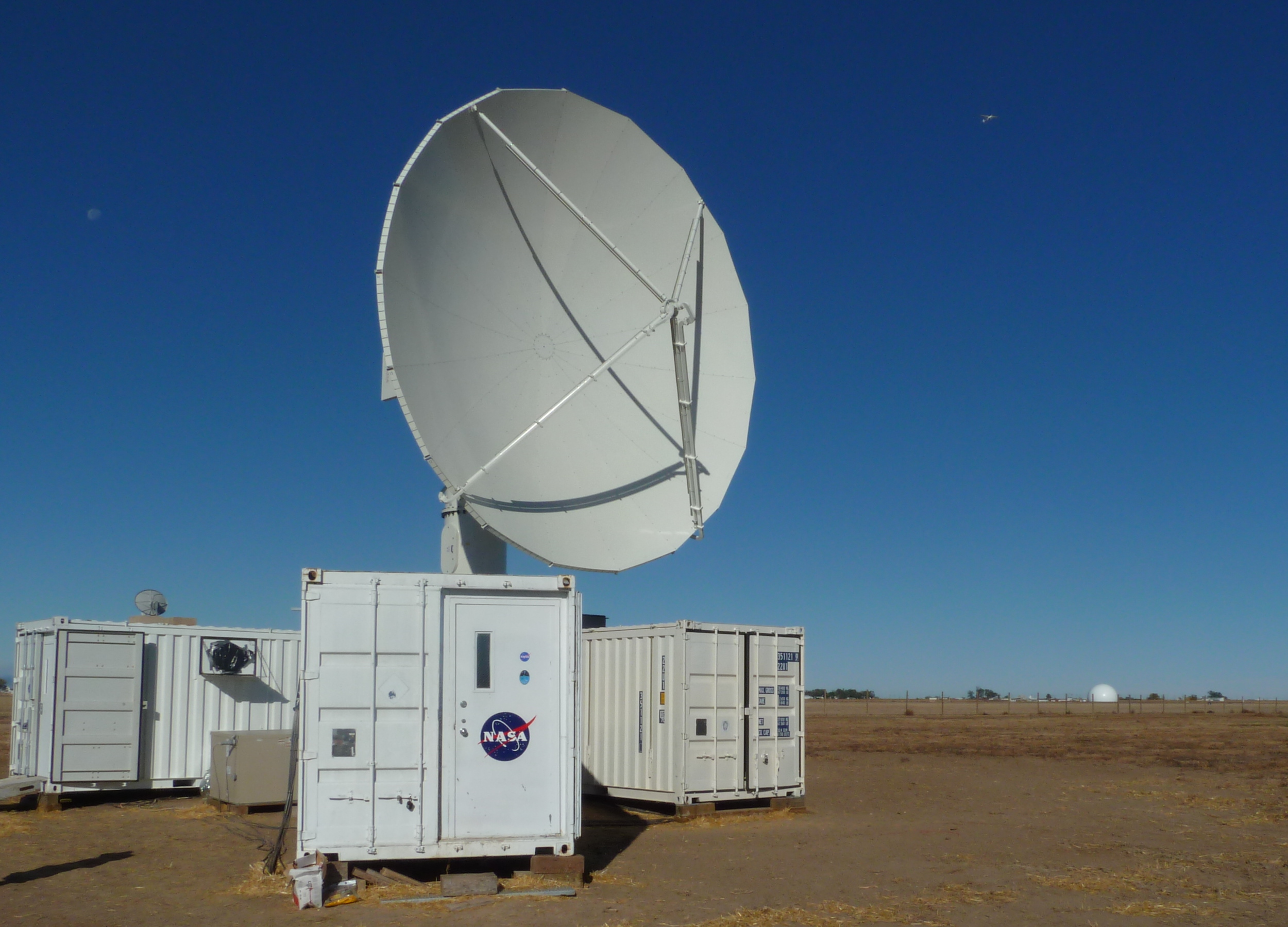
The NPOL underwent a complete antenna system upgrade in 2010 and is one of two fully transportable research-grade S-band systems in the world. It is used to make accurate volumetric measurements of precipitation including rainfall rate, particle size distributions, water contents and precipitation type.